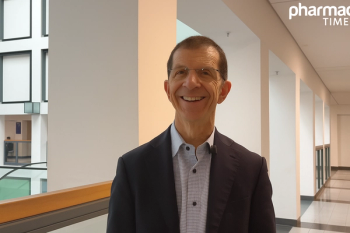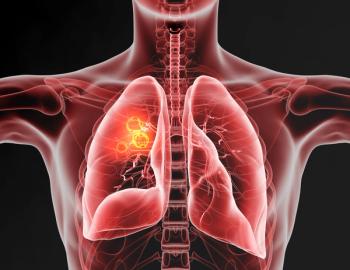
False-negative COVID-19 Test Results Pose Imminent Threat for Health Care System
Key Takeaways
- False-negative COVID-19 test results can lead to a hidden wave of infections, especially among healthcare workers, posing risks to the healthcare system.
- RT-PCR testing is more reliable when positive; negative results require cautious interpretation, considering patient characteristics and exposure.
Providers with access to COVID-19 tests have reported false-negative results for some patients, raising concerns about the limitations of tests as a source of reliable information.
The availability of tests for coronavirus disease 2019 (COVID-19) has been a topic of urgency in the United States, as tests have not been widely available to the public since the virus began to surge. Yet, those providers with access to COVID-19 tests have reported false-negative results for some patients, raising concerns about the limitations of some types of tests.1
A special article published in the Mayo Clinic Proceedings shed light on the inherent problem of relying on tests that have the potential for results with false-negatives when making clinical and public health decisions.1 The authors of the article explained that the sensitivity of reverse transcriptase-polymerase chain reaction (RT-PCR) testing and overall test performance characteristics have not been reported clearly or consistently in medical literature as of yet, making the results of these tests an unreliable source of information.1
Consequently, the prevalence of this issue may cause a “less visible second wave of infection from people with false-negative test results,” said Priya Sampathkumar, MD, an infectious diseases specialist at Mayo Clinic and co-author of the article, in a press release.2
Sampathkumar explained that RT-PCR testing is most useful when it is positive and less useful in ruling out COVID-19 when negative.2
“A negative test often does not mean the person does not have the disease, and test results need to be considered in the context of patient characteristics and exposure,” Sampathkumar said.2
With test sensitivity values as high as 90%, the magnitude of risk from false test results will increase substantially as more people are tested throughout the country, according to the researchers.1
“In California, estimates say the rate of COVID-19 infection may exceed 50% by mid-May 2020,” Sampathkumar said. “With a population of 40 million people, 2 million false-negative results would be expected in California with comprehensive testing. Even if only 1% of the population was tested, 20,000 false-negative results would be expected.”2
Among health care providers, this magnitude of risk is particularly problematic. For example, if 4 million health care personnel were providing direct patient care in the United States, and 10% of their test results were false-negatives, then 40,000 false-negative results would be expected of that 4 million.1 With these personnel showing up to work and continuing to provide care for patients, their presence poses real risks for the health care system and its ability to manage the spread of COVID-19.1
“Currently, CDC guidelines for asymptomatic health care workers with negative testing could lead to their immediate return to work in routine clinical care, which risks spreading the disease,” said Colin West, MD, PhD, a Mayo Clinic endocrinologist and co-author of the article, in a press release.2
In light of this, the authors recommend public health officials make use of principles of evidence-based reasoning regarding diagnostic test results and false-negatives, with 4 specific recommendations:1
- Health care personnel should continue strict adherence to physical distancing, hand-washing, surface disinfection and other preventive measures, regardless of risk level, symptoms or COVID-19 test results.1 Universal masking of both health care workers and patients may be necessary to support these efforts.1
- The development of highly sensitive tests or combinations of tests is needed urgently to minimize the risk of false-negative results.1 Improved RT-PCR testing and serological assays, which are blood tests that identify antibodies or proteins present when the body is responding to infections such as COVID-19, are still needed.1
- Risk levels must be carefully assessed prior to testing patients, with acknowledgment that negative test results should be viewed cautiously, especially for people in higher-risk groups and in areas where widespread COVID-19 infection has already been confirmed.1
- The development of risk-stratified protocols to manage negative COVID-19 test results is currently necessary, with importance placed on these protocols being able to evolve as more statistics become available.1
Although negative test results may be sufficient to quell fears for lower-risk individuals, West explained in the press release that “for higher-risk individuals, even those without symptoms, the risk of false-negative test results requires additional measures to protect against the spread of disease, such as extended self-isolation.”2
Sampathkumar explained further that at the Mayo Clinic, RT-PCR testing is one of many ways to decide whether a patient meets the criteria for COVID-19.2 For example, if a RT-PCR test is negative but a chest X-ray or CT scan results are abnormal, or if it is known that the patient has been in close contact with a person who has confirmed COVID-19, it is recommended that providers continue to care for the patient and take precautions as if he or she has COVID-19.2
“We need to continue to refine protocols for asymptomatic patients and exposed health care workers,” Sampathkumar said.2
REFERENCES
- West CP, Montori VM, Sampathkumar P. COVID-19 Testing: The Threat of False-Negative Results. Mayo Clinic Proceedings; 2020. doi: 10.1016/j.mayocp.2020.04.004.
- False-negative COVID-19 test results may lead to false sense of security [news release]. ScienceDaily; 2020. sciencedaily.com/releases/2020/04/200409144805.htm. Accessed April 13, 2020.
Newsletter
Stay informed on drug updates, treatment guidelines, and pharmacy practice trends—subscribe to Pharmacy Times for weekly clinical insights.















































































































































































































